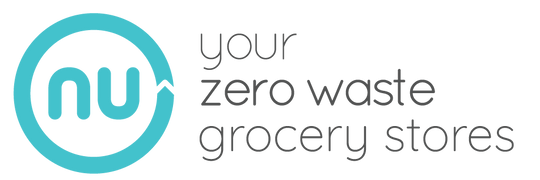Have you made the switch yet? There’s a reason milk alternatives are showing up everywhere these days! They boast a lower overall environmental impact than dairy milks, and are a healthy and delicious addition to cooking, baking and coffee alike. Milk alternatives are here to stay.
Did you know that oats use 80% less land to grow than what is required to make dairy milk? And while a single 200 ml glass of dairy milk is responsible for roughly 600 grams of greenhouse gases, a glass of oat milk sits at just 180 grams. Alternative milks such as oat, sunflower-seed or hemp milk also consume less water, making them a major win for Mother Earth!
Today I’m sharing three of our favourite non-dairy milk recipes featuring oats, sunflower seeds and hemp hearts. These are Canadian crops that offer all the added benefits of locally grown food: better traceability, shorter transportation routes (hence lower GHG emissions), and no deforestation in developing countries!
Ingredients:
- 4 cups cold water
- 2 teaspoons maple syrup or 1 date for sweetness
- Nut milk bag
- Large jar or container to hold the final product
- Blender
- 1 cup* of your milk base - we’re recommending one of the following: oats, hemp seeds or sunflower-seeds
- Optional: small mesh strainer
*In general, most milk alternatives use a ratio of 1:4, you can adjust from here depending on how thick and creamy you want your end result to be!
Recipe:
Add all ingredients to a high speed blender. If you are working with a smaller blender feel free to split ingredients into two batches. Now here’s the important part: blend for just 30 seconds. This is crucial in getting an ideal texture and avoiding any goopiness caused by over-blending.
If you plan on using your homemade milk in smoothies or for cooking, you can skip the straining process. If you want a smoother finish for coffee or tea, you’ll want to strain it in a nut milk bag. Arrange your nut milk bag over a large bowl and proceed to pour the blended mixture into the nut milk bag. Gently squeeze out the milk, careful to not squeeze the pulp completely dry as this might affect the overall texture. Finish off by pouring your milk into a large jar or container. For an even smoother finish, I recommend taking a second pass through a small mesh strainer.
Don’t forget to save that leftover pulp! It is a great addition in smoothies or DIY skincare, and avoids unnecessary food waste. Homemade milks will keep for around five days, and will naturally separate in your fridge. Don’t stress, just give it a good shake before use!
Annie ZrydSources:
Almonds are out. Dairy is a disaster. So what milk should we drink? (2020, January 29). Retrieved April 16, 2021, from https://www.theguardian.com/environment/2020/jan/28/what-plant-milk-should-i-drink-almond-killing-bees-aoe
Briggs, C. (2019, February 22). Climate change: Which vegan milk is best? Retrieved April 16, 2021, from https://www.bbc.com/news/science-environment-46654042
Whiting, T. (2019, May 20). What milk should you buy to reduce your environmental impact? Retrieved April 16, 2021, from https://tabitha-whiting.medium.com/what-milk-should-you-buy-to-reduce-your-environmental-impact-e0489153e3b8#:~:text=Greenhouse%20gas%20emissions%3A%20a%20200ml%20glass%20of%20oat%20milk%20is,than%20soy%20or%20cow's%20milk.&text=In%20terms%20of%20water%2C%20then,grow%20than%20dairy%20milk%20requires.


